Kristen takes us through some choice cards that she’s stopped running due to how the format has changed, new card printings, or sheer obsolescence.
There’s a natural progression to upgrading Commander decks over time. Unless you regularly deconstruct decks, chances are you’ve had to endure the agonizing process of cutting cards from your favorite decks to fit in the exciting new options available every time a new product drops.
Whether it’s a new efficient piece of removal or a splashy and powerful creature, something has to go. At times, this can be pretty easy—a direct upgrade to an existing card design can make the process trivial—but other times, it’s painful to have to say goodbye to cards you’ve come to love. Invariably, those underrated pet cards that you’ve long held as being key role players end up being retired, and it’s a bittersweet goodbye.
Today, I’d like to look at some prime examples that just don’t cut it anymore, and what has changed to make that the case. I’ll be evaluating these cards from the average player’s perspective; if you still run one of these in more janky decks, that’s totally fine; and if you’ve never even considered running it because you play at higher power levels, that’s fine too. My Legion’s Landing column aims to capture the cross section in the middle. Let’s get started.
Return to the Earth
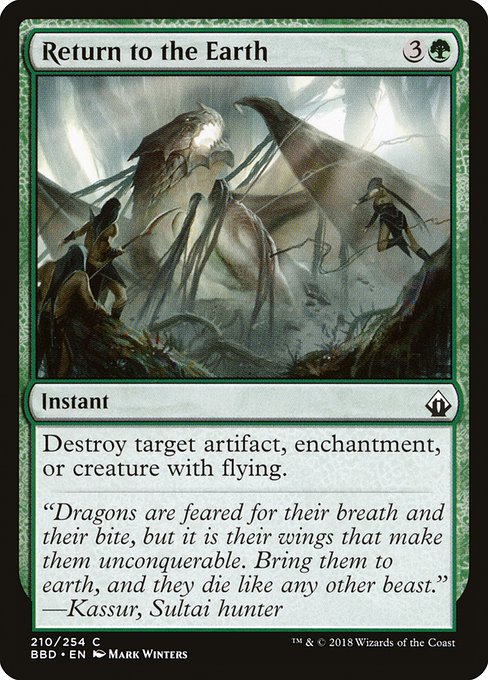
Limited powerhouse Return to the Earth is a great example of removal that shines in a particular environment. When it comes to Commander, this card has also historically been a great flexible answer for me in my mono Green or Simic decks that otherwise lack answers in general. What made this card shine even more for me was that it also enjoyed being relevant to my particular local meta in the same way it was relevant to its own Limited environment. A few years ago, it was rare to sit down at a table in our store without someone running flying threats, be they Angels, Dragons, or other evasive creatures. Coupled with the ability to remove artifacts and enchantments at instant speed, it was almost never a dead card.
Skip forward to today, and it’s feeling a little redundant for multiple reasons. The first is that Green has had a deluge of efficient effects printed over the past couple of years. Ignoring budget, Vivien Reid is a straight upgrade in many ways; and outside of that, we’ve had cards like Force of Vigor, Ram Through, and Primal Might that all cover some of the bases this card cares about.
Additionally, with the speed of the format increasing, cards like Krosan Grip and Nature’s Claim are more relevant than ever. Mana efficiency has started to outpace flexibility as the leading decision point on what cards to run. Return to Nature is a card with the flexibility and modality of Return to the Earth at two mana less with an arguably more relevant third option, and I think that says it all.
Return to Dust
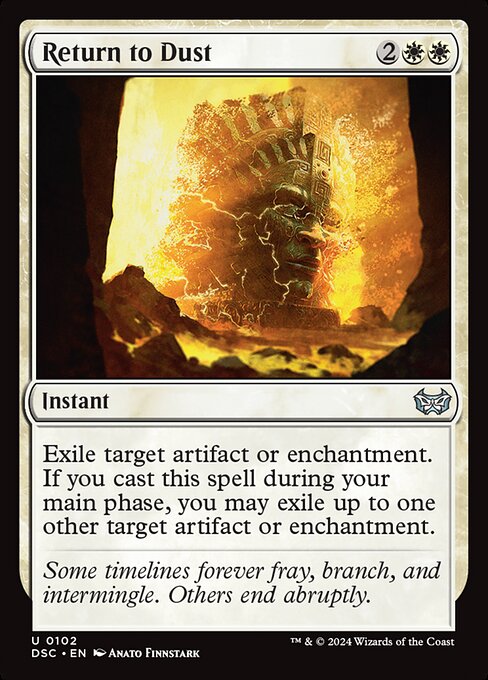
Return to Dust is simply not good enough anymore. The days of recursion-based slog gameplay are in the rear view mirror; combined with an ever expanding arsenal of cheap graveyard interaction, it’s left Return to Dust in the dust.
Ahem.
It used to be that I’d love to run both this and Crush Contraband, as I valued the ability to exile permanents in times when games went a little longer. Now, though, things are faster, and White has access to Dismantling Wave, Heliod’s Intervention, Generous Gift, and Ugin, the Ineffable, which all offer additional value than purely single target removal. Even the lowly Disenchant is seeing more play in faster metagames, and so I don’t think Return to Dust cuts the mustard anymore.
For more insight into current mono White deckbuilding, check out my recent article on the Evolution of Mono White, where I also cover other retire-able cards like Mind’s Eye.
Gilded Lotus
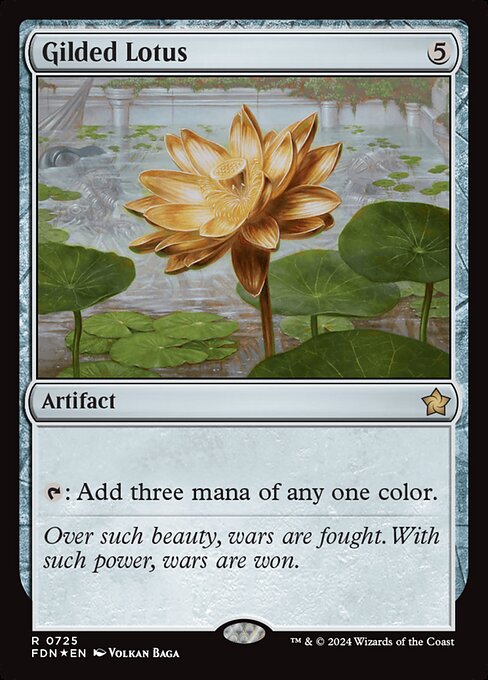
Gilded Lotus is a card I’ve long felt doesn’t have enough impact. By turn five, dropping a mana rock is not where you want to be. On first glance, it doesn’t seem too different to Thran Dynamo, a card I’m still pretty high on, but the fact that this comes down a whole turn slower is actually a pretty big negative. With Thran Dynamo, casting it on turn three or four will often give you at least a turn to take advantage before a board wipe hits, but dropping the Lotus on turn five you’ll often not have the luxury. It’s also a liability in that it makes colored mana; most often you’ll want to run this for combo potential in anything above casual games, and so people will zero in on it as being a threat more often than not.
Relic of Progenitus

Relic used to top my list of flexible graveyard hate due to the fact it replaces itself, and that it can slowly chomp away at graveyards like a more distracted Scavenging Ooze. The card draw was an advantage in Red and White in particular due to the lack of options. These days, though, all colors are benefiting from more and more card advantage, whether in cards like Treasure Map and Endless Atlas that can fit in most decks, or more specific cards in their colors.
On top of that, we now have options like Soul-Guide Lantern, which can deal with a problem card, and on the way out exile each opponent’s graveyard, leaving our own intact—see also Ashiok, Dream Render. There’s also a lot of great creatures like Remorseful Cleric, and I’ve even seen a resurgence in Agent of Erebos thanks to some of the more powerful enchantments printed in recent times.
Beyond that, if you’re playing at higher power levels, or want to cantrip casting your artifacts, then Tormod’s Crypt is better most of the time.
Also, Scavenger Grounds is free.
Go for the Throat
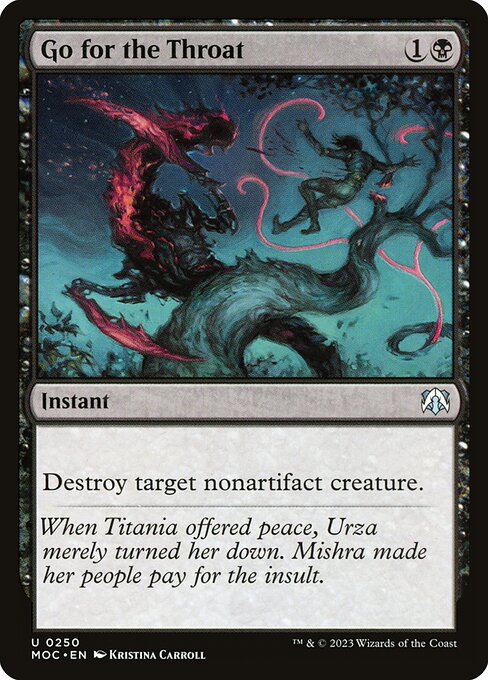
Go for the Throat used to be the premier removal spell for Black in EDH. I’ve found myself dropping it from my lists more and more often lately, though, which is interesting in and of itself. Granted, outside of Mono Black, it’s often better to run Swords to Plowshares, Terminate, Assassin’s Trophy, or Rapid Hybridization instead; but that’s not the axis I’m evaluating it on.
The single greatest threat to this spell’s relevance is the prevalence of Golos, Tireless Pilgrim at tables everywhere. It’s the most popular Commander of the past two weeks on EDHRec (and third of all time!). If you can’t remove Golos, then you’re not in a good spot. With the reprint of the popular Breya, Etherium Shaper in Double Masters alongside some other great artifact creatures, I just can’t in good conscience recommend this spell anymore.
It’s not a big loss, however, when you consider that the new Heartless Act probably hits more creatures, on average; and you can run it alongside the flexible Murderous Rider, and free spells like Snuff Out and Deadly Rollick.
Colossal Majesty
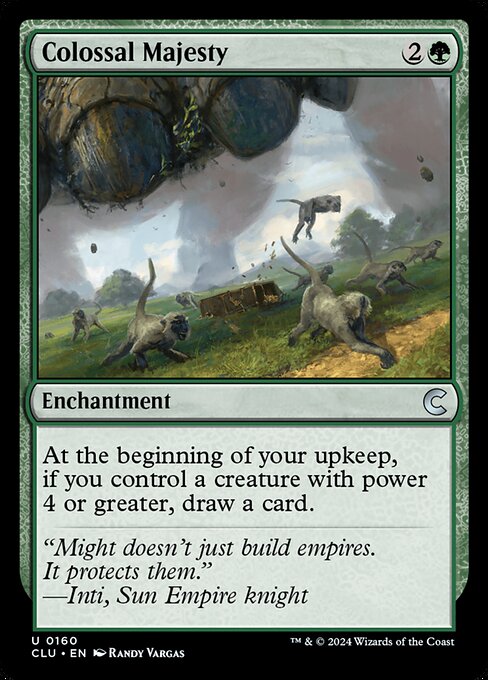
I’ll admit: when I first saw Colossal Majesty, I kinda fell in love with it. Cheap draw that didn’t require casting a creature, only controlling one? It went straight into Rhonas, the Indomitable, and I was happy. It didn’t take long, though, for competition to start pushing it out of the deck.
Once able to be fit in nicely alongside Guardian Project and Beast Whisperer, Colossal Majesty feels outclassed by Garruk’s Uprising—and that’s not to mention The Great Henge, a card I still don’t own but is obnoxiously good. Vivien Reid and Vivien, Monsters’ Advocate are other great sources of card advantage with other upsides, and I’d much rather run those a little higher on the curve. Return of the Wildspeaker now also compliments Rishkar’s Expertise, and the slots for additional card draw start to feel filled automatically.
The Art of Upgrading
Upgrading decks is a personal process, and what works for one player may not apply to another. Through playing a deck consistently, and tinkering with it over time, you’ll find what works and what doesn’t. Some of the less powerful cards of yesteryear are obvious cuts, but others aren’t. It can jarring when you realize a format staple just doesn’t cut the mustard anymore; one card I find myself constantly cutting from my list these days is Mimic Vat. I just never feel like it does enough, and doesn’t really earn a spot in the 99 compared to the numerous other cards I’d like to try.
On the other hand, a lot of value can be gained from this process. Rather than just swapping older cards out on a like for like basis, consider just designating the free slots you’ll get as flex slots. Use the games you’ll have next to try out a variety of other cards you’ve considered putting in the deck. It might lead you in a new direction, or even set off a ripple that frees up other card slots as you identify new synergies you’d like to try.
Additionally, by removing these less powerful cards by upgrading, you’ll start to accrue some B-team cards that could easily contribute to a more casual deck that you can pull out against precons or new players. It’s always great to have one of these decks just in case, and I personally find it a more satisfying experience to use the tools at hand and respect other players by not tempering plays, rather than letting a game go longer when I have the win in my hand with a more powerful deck. There’s no reason to play with your food, after all!
If you enjoyed today’s piece, let me know on Twitter. I’m interested to hear about the cards you’re also dropping from your decks, and why.
Based in the UK, Kristen is a lover of both Limited and Commander, and can most often be found championing the Boros Legion when called upon to sit down and shuffle up.

